


Grangetown - how it used to look and those places today
A few old photos of Grangetown, with how those scenes look today. Move your mouse over the old photos to see the change.
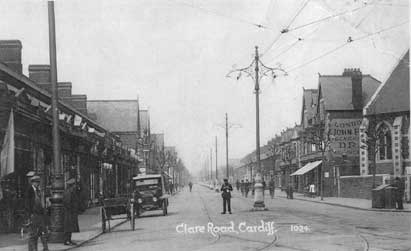
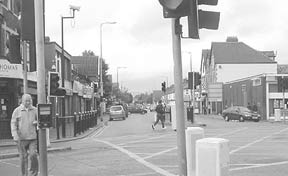
Clare Road, from Penarth Road and then
(below), Penarth Road near the Clare Road junction. The old Penarth Road
methodist church on the corner has been replaced by a supermarket after
first closing and then being badly damaged by fire in the 1970s.
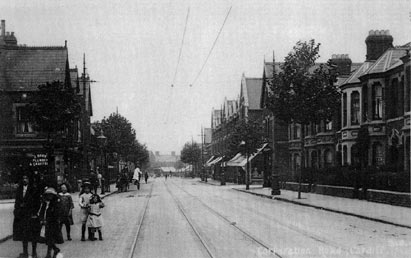
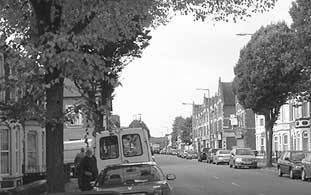
Corporation Road was a main thoroughfare,
although the Butetown end of the road (behind this image) was only developed
comparatively late. Today, there are more cars of course and no tramlines.
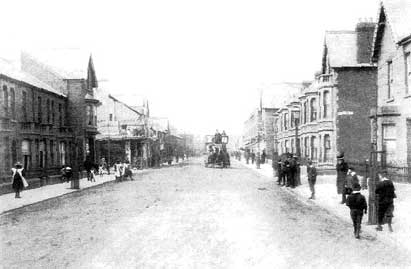
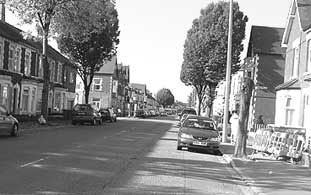
Another shot of Corporation Road, near the
Stockland Street junction. You can make out the Hollyman's bakery, which was bombed in World War Two.
The Square in Holmesdale Street, with the rather ornate public convenience in the centre - and how the area looks today.
Clive Street, with the distinctive Clive Buildings (built c1891) on the left. The tramlines have gone of course.
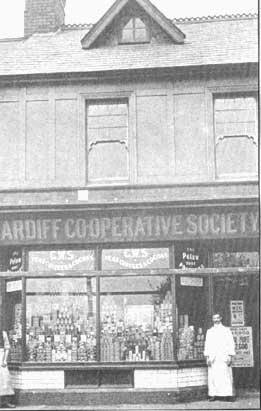
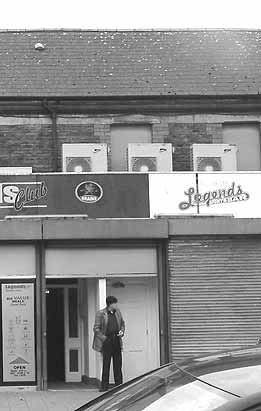
The old Co-Op at No 158 Clare Road dates
from around 1904. It is hard to recognise the building now, as the front and
roof look very different and it's a snooker club/bar. The Co-Op also eventually
extended into No 160 nexr door. Clare Road is still quite a busy shopping street
but at the time the Co-Op first appeared, it was bustling with around 70 shops
and tradesmen. On either side in 1905 was Philip Tyndall, a cabinet maker -
he was a Gloucestershire man, who lived at No 160 with his wife Mary Ann - and
Eastman's butchers. At No 59-61, was Harding's brewers and mineral water manufacturers,
while the Salvation Army barracks was at No 104.
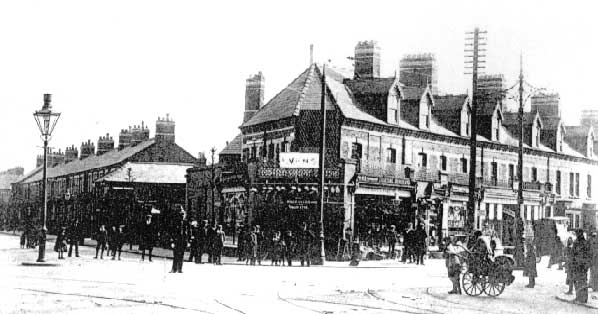
Penarth Road junction with Paget Street -
today it looks pretty much the same, apart from the traffic of course!
Joshua Bann (standing right) and his butcher's shop in Kent Street/Holmesdale Street, about 1902. He opened the shop in 1896 and his son Harry, pictured next to him carried on until 1951. His daughter Lal later married another butcher, Jack Harris of Corporation Road. It's now a private residence.
Paget Street was once a very busy shopping street - and you can see still where those businesses used to be. This is looking back down Paget Street towards Penhaved Street before World War One. Rita Spinola remembers Bill Powell's cycle shop at No 81, just on the right and now a house, during the 1940s and 50s. "Bill Powell had lots of bicycles in his shop and also he would repair them for people. I was not allowed to have a bike until I was 14 but I was allowed skates so we used to go into Bill's shop and he would repair our skates for us. I don't think we had to pay him."
R B Flowers shop, in about 1915, on the corner of Cornwall Street and Sussex Street.
Another of Grangetown's fantastic late Victorian
buildings, long since disappeared. The Grangetown Forward Movement mission hall
was built in 1895 on the corner of Paget Street and Corporation Road. It closed
in the 1960s, was demolished in 1968 and the site later became an office equipment
store and is now a Tesco store. The Calvinistic Methodist Forward Movement was
set up in Cardiff in 1891 and established a number of Christian missions around
the town, in which chapel members provided meals to children from poor famiilies,
as well as Sunday schools. The Grangetown mission started off in a tent in 1893,
before being replaced by an iron building. This brick replacement cost £3,352
to build and typically was rather too grand - and expensive - an undertaking
. For example, a bazaar was held in 1899 towards trying to raise money towards
an outstanding £2,000 debt on the buliding. The movement was started by
Rev Dr
John Pugh, who left his post at the Clifton Street chapel in Roath. By 1894,
four centres in Cardiff and 15 more outside had been established. Five years
later, it had 20,000 members, with 35 centres across Wales, one in London with
hopes of more to follow in Manchester and Liverpool.